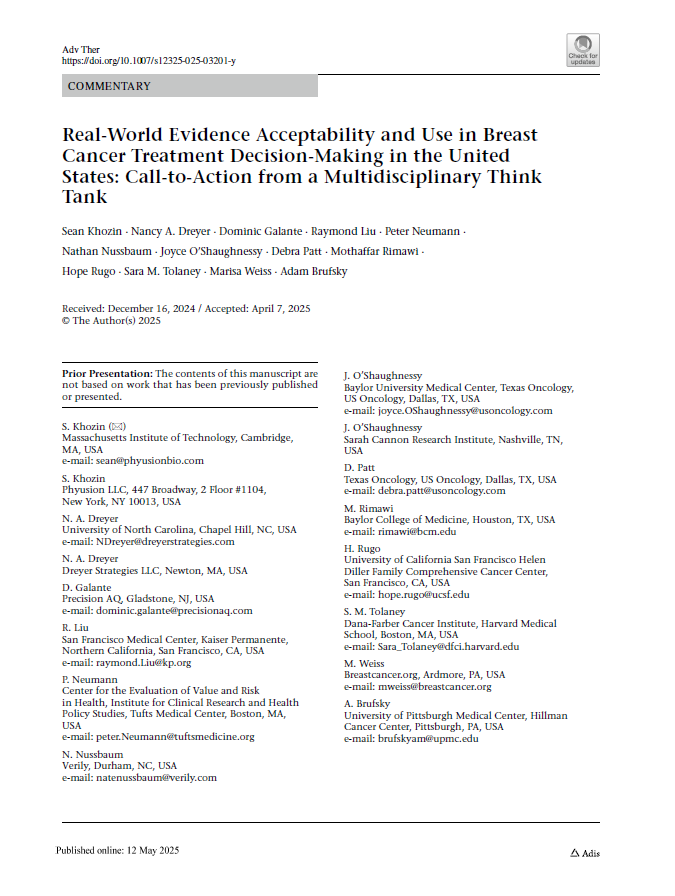
In part I of this series, we provided a high-level introduction to gene therapies and described why commercial planning for them is so complex. While part I offered a broad look at these innovative therapies, part II focuses on one topic: the supply chain.
When developing commercial strategy for any biopharma therapy, the supply chain is a critical component. This holds true with gene therapies, though they ratchet up the complexity level quite a bit.
In this paper, we dissect the supply chain topic into a number of components, such as manufacturing, packaging, labeling, logistics, etc. For each component, we discuss how it differs for gene therapies (vs. “traditional” pharmaceutical and biotech therapies) and provide some guidance for commercial strategy development.
Drivers of Supply Chain Complexity for Gene Therapies
There are two basic factors that drive complexity when it comes to supply chains for gene therapies. The first is their complicated nature and the second is their relative novelty.
Many gene therapies–though not all–have multi-step processes for administration, sometimes making for a complex and difficult patient journey, particularly with autologous ex vivo therapies. Stakeholders are dealing with genetically modified material and, in the case of ex vivo therapies, living cells.
This multi-step process can necessitate a range of special handling requirements, specialized equipment and training, as well as additional biosafety measures across the entire supply chain. It can also result in supply chains that have many vendors and partners involved, all of which have to be vetted and managed effectively. The personalized “vein-to-vein” supply chains for autologous therapies drive additional effort with respect to managing the chain of custody and the chain of identity (from patient to raw material/donor).
Gene therapies’ relative novelty also boosts the supply chain challenge. In this emerging field, there is a lack of standardization which shows up in variable and evolving handling processes, documentation and labeling requirements, regulatory guidance, etc. This variability exists across national and state / provincial jurisdictions. Biopharma companies, regulatory authorities, and other stakeholders are still “figuring things out,” and the learning curve complicates planning efforts. As an example, there is no standardized format to manage the chain of identity. This results in companies using multiple approaches to labeling, as well as different supporting IT systems for tracking. It’s also not yet clear what exemptions to standard labeling practices regulators will allow for gene therapies, given their uniqueness.
Supply Chain Components
Any biopharma supply chain will have a significant number of “moving parts” in it. For gene therapies, we highlight a range of components that offer more complexity, describing how they differ from more traditional pharmaceuticals and offering some thoughts for commercial planners.
Manufacturing
Simply put, manufacturing is more costly and complicated for gene therapies. It involves working with DNA/RNA proteins and, oftentimes, living cells. It’s also low volume, which makes it difficult to realize economies of scale. Ex vivo therapies are even more complicated because they involve cell manipulation and, in the case of autologous therapies, multi-step personalization processes.
This type of manufacturing also requires special—and costly—capabilities, and the limited availability of outsourcing partners in this area adds to the challenge. For biopharma companies, this complexity can necessitate costly investments in dedicated, customized capabilities that can’t be easily used for other purposes.
Companies must start investing in these capabilities during the clinical phase and then expand if and when a therapy gets to market. It can be challenging for companies to ensure that the costs associated with these capabilities are fully reflected in the approved price for the therapy. Therefore, it’s imperative that they be very strategic when making “build or buy” outsourcing decisions. It also reinforces the need for a well-constructed access and reimbursement strategy early on.
Once a biopharma company takes a cell therapy into the commercial market, a high degree of manufacturing flexibility is required. Companies that outsource will need to carefully structure the agreements with their contract manufacturing organization (CMO) partners. This may include the use of dedicated production lines or “pre-booked” production slots. These types of agreements come with financial commitments, however, and some degree of risk that must be planned for and managed.
Packaging and Labeling
A range of factors come together to drive complexity in packaging and labeling. Unlike “traditional” pharmaceuticals, which are packaged and labeled in batch mode well before treatment, some gene therapy products must be managed on a “just in time” (JIT) basis. This increases costs and drives the need for strong coordination within the supply chain.
On top of this, labeling must often be carried out under extreme temperature conditions, such as -80° C or even -150° C. That requires specific equipment, specialized packing materials (e.g. labels that will continue to adhere at extremely low temperatures), and training. Again, the list of outsourcing partners who can provide these capabilities is rather short, at least today.
Along with the physical challenges in this area, there are also data challenges. Gene therapies require substantial documentation beyond what is needed for “normal” medicines. A lot of patient information must follow each therapy, but in a way that is GxP compliant, protects privacy, and ensures accuracy.
Throughout all stages of therapy administration, the chains of identity and custody must be flawless, as there are many handovers of materials and data between various entities during the process. This is especially critical with therapies that are matched to the patient.
A biopharma company will need to plan its packaging and labeling approach carefully, not only with a focus on operational excellence, but also with an eye towards maximizing efficiency and controlling costs.
Onboarding of Hospitals
Special capabilities, training (often triggered by GMO classification, special handling requirements, or other supply chain-related needs), equipment (such as GMO-specific stations, freezers, etc.) and qualification (in some cases) are required for hospitals, as well as apheresis and/or transfusion centers that are involved in handling or administering gene therapies. So, biopharma companies must do the legwork of identifying and on-boarding facilities in all key markets. This is a far cry from the situation for traditional medicines, for which on-boarding is a relatively simple, straightforward process.
As a result, some companies decide to field special account managers or teams, as well as training / qualification programs and/or dedicated information technology (IT) portals. Such IT portals can facilitate the compliant exchange of personalized patient information with hospitals and/or customer service teams. However, many hospitals and healthcare providers complain that they are overwhelmed by a proliferation of various portals, the SOPs associated with the therapies they support, and the staff training that’s required to operate them.
Non-existent or inconsistent standards make this entire process more challenging, and not just related to the IT portals. For example, the regulatory guidance with respect to the allowed storage time for ex vivo therapies (living cells) in hospitals varies across countries. This also applies to biosafety guidance and licenses. All of this means that on-boarding must often be country- or even hospital-specific, as well as being therapy-specific.
Companies should be aware of the potential difficulties associated with on-boarding facilities. This “last mile” piece is extremely important, but sometimes underestimated.
Biosafety and Quality Assurance
Gene therapies involve special training and licenses because they deal with genetically modified materials, with additional complexity surrounding ex vivo cell therapies. Limitations on storage times and strict temperature requirements are likewise needed to ensure safety.
Quality assurance procedures are also interesting. Overall, more quality control (QC) testing is required for gene therapies vs. traditional medicines. Also, ex vivo gene therapies are excluded from mutual US-EU recognition with respect to QC testing. With most medicines, products that have passed testing in the US are allowed to be imported into EU countries (and vice versa). This is not the case with ex vivo gene therapies, so retesting is required before materials can be imported and released into the market. It’s important to note that there is room to negotiate exemptions regarding retesting, but clarity on this may only become available during the regulatory review process.
In the EU, gene therapies also involve a more complex Qualified Person (QP) release process. Due to their low volume and often personalized manufacturing and packaging processes, QP release may need to take place JIT. In some cases, the required testing takes longer than the allowed time before the cells must be infused into the patient. In those situations, the therapy can be provided under an initial release, even though not all test results are back yet. The point is, this is a new field which requires QPs to “learn as they go” and adapt in a variety of ways. Compounding the challenge is the fact that far more documentation is required to release a gene therapy treatment than for standard biopharma products (which are released in batches).
Logistics
A typical pharma-focused third party logistics provider can satisfy most of the standard needs for a traditional medicine. For gene therapies, the requirements are far more stringent and “white glove treatment” is a necessity for these high-value, low-volume therapies. As noted earlier, they typically have special handling requirements, with temperature control being extremely important.
Movements of material though the supply chain are usually highly time-sensitive and must be 100% error free. For example, a vein-to-vein process may need to be done in less than 48 hours during which product has to travel from the patient (apheresis) to the manufacturing location and back again (for infusion), often crossing national borders or even continents. The timelines can become even more tight in situations where the apheresis process alone for ex vivo therapies can take two days and the manufacturing location is far away. Future solutions might include “shelf-life” extension studies leveraging cryopreservation or other methods. With in vivo therapies, it’s a simpler, less time-sensitive process.
In addition, return logistics are a factor that requires planning. They are sometimes involved with in vivo therapies and are always involved with ex vivo therapies. Fully tested and (GDP-)verified backup routes are also typically required.
A biopharma company should leverage specialized expertise when planning for these logistics needs. Therefore, solid vendor identification and selection processes are a must. A biopharma company needs to have a robust and diligent process for vetting and selecting providers of “white glove” services related to packaging, transport, temperature control, tracking, and overall coordination.
Patient Services
The supply chain is often involved in the coordination of patient services. Therefore, patient services are worth mentioning here, even though they’re not technically supply chain components. As one might expect, they will tend to be more elaborate with gene therapies.
Patients need detailed information on the treatments, what to expect at each stage, how to prepare for them, and so on. In addition, support is often needed with treatment scheduling, preparation, and follow-up, particularly as patients may be required to travel out-of-state or across national borders for treatment.
Patients may also need payment support, particularly in the US. In addition, patients may need to stay close to the hospital for a time after treatment, though this seems more often the habit in the US than in the EU. Overall, however, patient services can be more challenging to design and implement in Europe vs. the US. This is because the US allows direct interaction with patients while European countries have more stringent regulations in this area. Biopharma companies must integrate the planning for these services into the overall process of supply chain development.
Payment / Order to Cash Processes
Payment processes are different from the standard “pay per pack” approaches associated with traditional medicines. Key differences include
- Higher prices
- Lower volumes
- Variable production volumes / dosing / treatment cycles (based on how successful the apheresis process is, body weight, and/or other factors)
- The probability of cross-border travel for various steps in the treatment process
- The possibility of pay-for-performance agreements
Unsurprisingly, higher pricing complicates the market access process, and biopharma companies must invest appropriately in developing and defending solid value propositions to support their pricing. From a payment processing standpoint, the challenges are also significant. For traditional medicines, the standard process is to invoice per the standard dose (the invoice goes with the shipment). With gene therapies, the pricing may be per full treatment or even be performance based. This means that the invoicing of the product is disconnected from the supplying of the product. This requires alternative processes with respect to order-to-cash and revenue recognition. It may also require specific IT system configurations and/or a customized set-up with a logistics or patient services facilitation partner.
A company must plan for these types of challenges early on. Otherwise, it risks getting caught in a very tight spot when launch nears and it suffers delays caused by having to go back and address them later.
Parting Thoughts
All of the components above—as well as others—must work together in harmony for a supply chain to function effectively. For any company, it can be a daunting task to design and establish such a system. For an emerging or smaller company with limited experience in the field, it can be downright intimidating, especially considering that this must all be done while significant attention is also being focused on getting a therapy through clinical development, securing regulatory approval, and addressing other aspects of an upcoming launch. Successful pharma companies planning to launch a gene therapy product will do the following:
- Begin working on supply chain issues early. In gene therapy, the clinical supply chain and commercial supply chain are very similar. This means that a part of the preparations for a commercial supply chain need to happen when preparing for phase 2 clinical trials (especially as phase 2 and 3 are often combined).
- Be highly strategic about build or buy decisions. For example, the decision to invest in manufacturing capabilities (as opposed to outsourcing them) will depend on a range of factors. These include the company’s vision for gene therapies, the number of them in its pipeline, etc. A company must carefully consider what to build vs. outsource…and when it does decide to outsource certain components, it needs to use a sound process for vendor identification and selection. Deciding where to build or buy is also an important step. For example, if your ex vivo therapy has very short lead times, then it might be critical to have manufacturing locations closer to the patients than a more traditional site selection process might otherwise indicate.
- Ensure that they are ready to properly orchestrate all of the relevant supply chain components. Individual vendors within the supply chain will not automatically work well together and “mesh” properly. The company must have resources in place to outline the supply chain vision and ensure that the disparate collection of vendors, partners, and internal stakeholders are all working in concert. It’s also important to realize that these vendors bring a lot of specialized knowledge to the table, so they should play a key role during the supply chain’s development phase, potentially helping to co-design it and forging a partnership that goes well beyond simply being a vendor that executes someone else’s prescribed plan.
- Leverage specialized support, particularly in the design and early implementation stages. As this is all new and there are a large number of partners involved (and their availability and capabilities are limited), it is important to apply a comprehensive end-to-end approach right from the start. Individual elements can be delegated, but everything must mesh perfectly together. This requires a high-level of expert orchestration.
Coming Next
Any commercial plan must account for the costs associated with commercializing an asset. Obviously, a biopharma company wants to optimize the commercial value of any therapy. The question is: What costs and trade-offs might be required to do that? In part III, we explore the key cost drivers for gene therapy products, and discuss how they can impact commercial decision-making.






